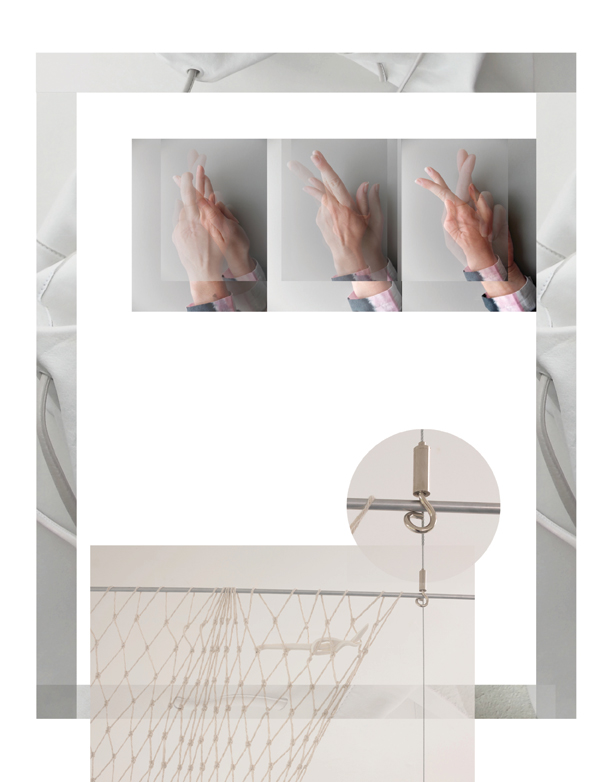Silhouette, Proximity, Panopticon, Score, Modern Edinburgh Film School, September 23 2015
Silhouette, Proximity, Panopticon, Score is the bringing together of recent works by four contemporary women artists living and working in Scotland: Lauren Printy Currie, Kirsty Hendry, Lyndsay Mann and Jessica Ramm. Alongside their images taken from film, performance, sculpture and text, is a painting from The Fleming Collection, Flowers and Red Table (year) by Elizabeth V. Blackadder. Taking cues from Blackadder’s careful arrangement of objects, this pentagonal shape of works, artists and subjects lines up with the Gallery of Modern Art, Glasgow exhibition Ripples on the Pond (30 April 2015-24 April 2015). These pages then form an echo to its exploration of women and works on paper from Glasgow Museums collection and the companion film programme and sister-essay A Poetic Measurement. The configuration published here offers up a selection of new and very recent works that share the exhibition’s ideas but are framed by methods and subjects beyond its parameters.
The exhibition’s central theme explores visibility in relation to women’s practice through landscape, feminism, portraiture and female presence. It allows for the activities of drawing, photography and printmaking to be seen simultaneously with moving image, while notions of the ephemeral and the moment play out alongside a longer timeframe of the ecologies of women artists emerging from Scotland.
The arrangement here adds the voice as a subject to these concerns. How the voice is heard, sustained, quoted, read and reproduced. It reinforces some of the subtle elemental qualities in the exhibition, particularly air and water, and returns ephemeral activities, like film and performance to works on paper. The title Ripples on the Pond becomes an action, illustrating like waves, and breaths, the connectedness of it all, the overlaps, abrasions, proximity, materials, and the gathering and deepening of its enquiries. This particular project forms a conversation with the parent exhibition and illuminates its ideas further from a distant but entirely integrated vantage point.
Glasgow-based Lauren Printy Currie presents a new piece shaped by bleus (2015) a hybrid sculptural and text work produced while on residency at the artists centre Cove Park near Helensburgh. Currie’s working processes, which bring together image, texts, objects and sound are part of an on-going enquiry into the multiple artefacts and encounter through which sculpture exists: What can be termed sculpture? While her intertwinement of matter and written language illuminate and describe new meaning for both. Her recent exhibitions also include read the room/you’ve got to, at SALTS, Basel, and mood is made/temperature is taken, at Glasgow Sculpture Studios both in 2014.
Glasgow-based artist Kirsty Hendry, who works with moving image, writing and print, presents a text extract from writing she produced while on a recent residency at Hospitalfield in Arbroath. Mutinous Parts (2015), a description of the body and its organs, their distinct yet interdependent properties is distilled from her interest into the relationships between objectivity, technology and the internet and subjectivity. She explores new media’s politics of image production, its proliferation and consumption. Forthcoming projects include Cursor, a commission by New Media Scotland and the exhibition RWX at Edinburgh Sculpture Workshop, while her texts have been include in the experimental writing anthology Gnommero and Studio Jamming at Cooper Gallery in Dundee.
Lyndsay Mann is an artist filmmaker currently completing her PhD at the University of Edinburgh. A Desire For Organic Order (2015) interweaves passages of documentary film with the film poem. It forms seamless shifts between narrative, voice-over, image, and research, with sequences of ambiguity, reflection and anecdote exploring the subjective and mutable nature of perception. Centred on the Herbarium at the Royal Botanic Garden Edinburgh, which holds one of the world’s leading collections of botanical specimens and is home to the garden’s Centre for Middle Eastern Plants, the film work oscillates between observations of the site, its scientific methods of codification and acquisition, and dialogue that offers an immersive and speculative sampling of its intertwining political, philosophical and cultural histories.
Edinburgh-based artist Jessica Ramm’s Cloud Dispersal (2014) brings together the synthetic and the natural, the briefest of moments, which captures the detonation of water vapour to recreate a cloud, with representations of durability and endurance. Her research consists of ongoing, haphazard experiments that examine an ordering of nature and the environment through technology and science, while she employs her body and its capacities and to test the properties and behaviours of matter. Ramm, who works across video, performance and installation, was recently represented at Platform at Edinburgh Art Festival, 2015 and at Leave the Capitol, at The Fleming Collection in 2013.
